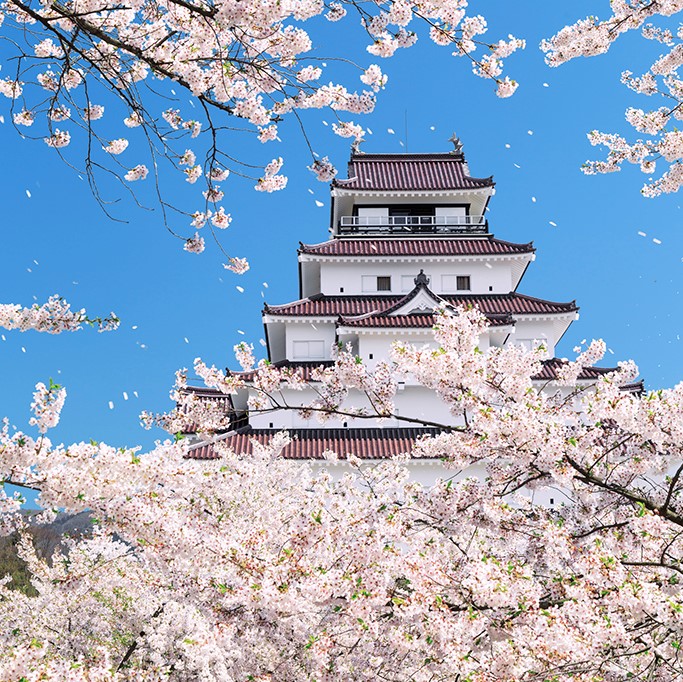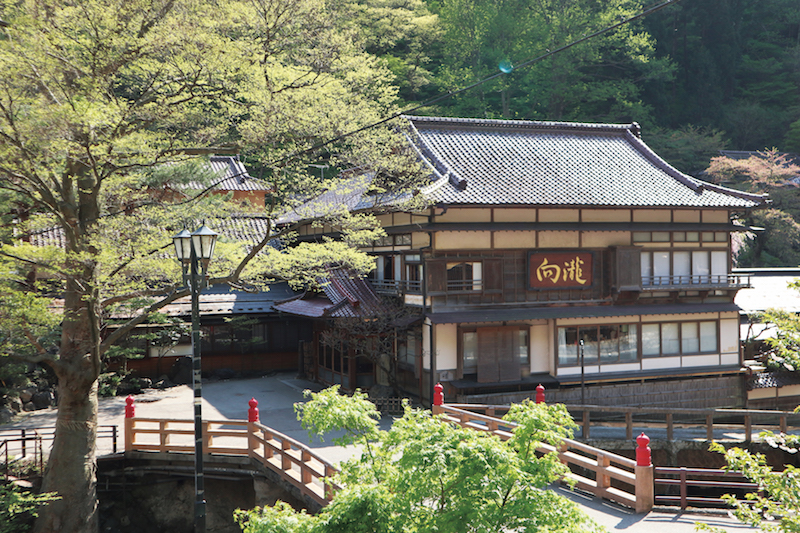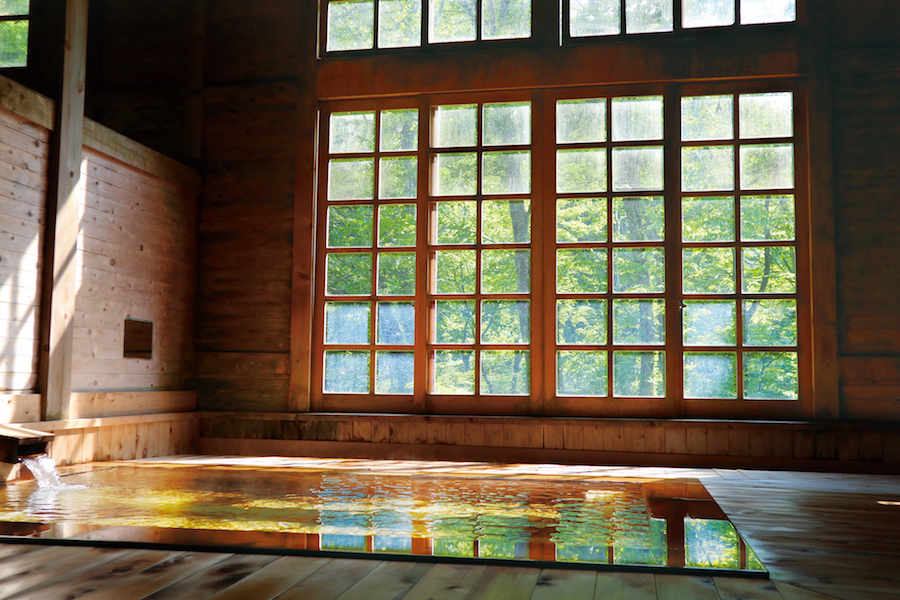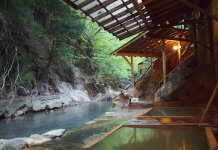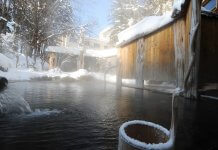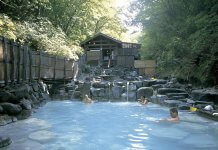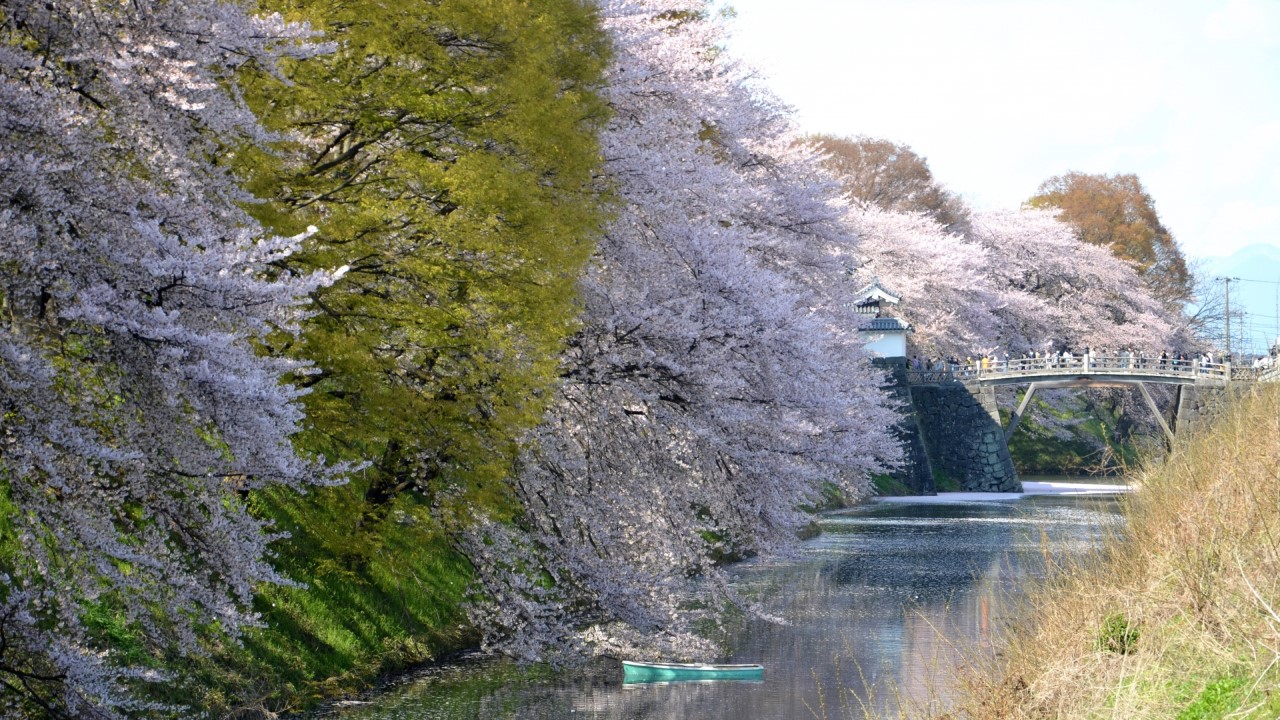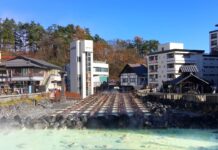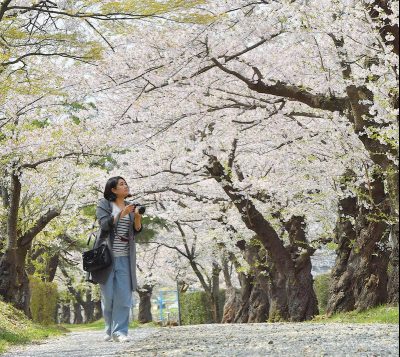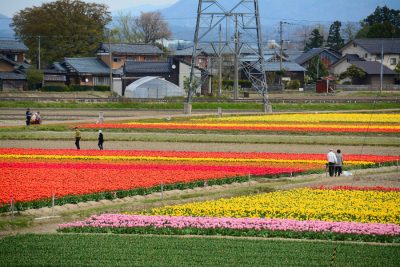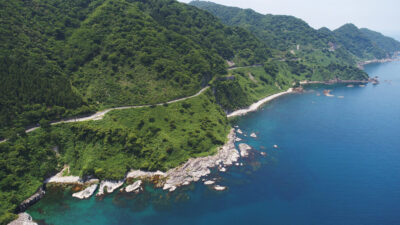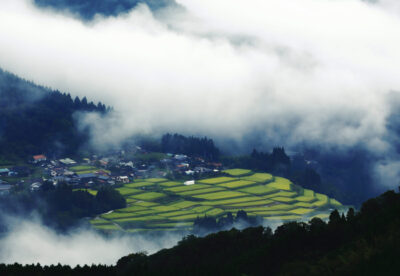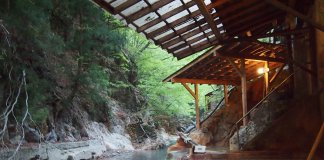For the Japanese, spring is “the season of cherry blossoms”. This love for cherry blossoms, called sakura in Japanese, forms part of the traditional Japanese culture. This is especially true for the cold northern region of Japan of Tohoku. Sakura hold a very special meaning to the people there. After a long winter trapped inside by mountains of snow, sakura signal the coming of spring. In the Tohoku region there are many famous cherry blossom trees and locations for O-hanami (cherry blossom viewing). This is because the people of Tohoku have a deep affection for sakura.
Samurai and Sakura
Tsuruga-jo Castle (Aizuwakamatsu, Fukushima)
The beauty of sakura is only for a fleeting moment. That beauty quickly withers away, and the blossoms flutter gracefully down from above to scatter on the ground below. This “gracefulness” is also one reason why Japanese are so moved by sakura.
Aizu-Wakamatsu is a historical castle town known as “the place where the last of the samurai stood their ground.” At Tsurugajo Castle in 1868 the final battle between the Tokugawa Shogunate’s army and the Meiji Restoration government forces was fought. This fight proved to be a major turning point in Japanese history.
Aizu’s samurai fought gallantly, but they were unable to overcome the strength of the Meiji government’s forces. The time of the samurai came to an end. Tsuruga-jo Castle has been restored to look as it did many years ago. As a result, became one of the most well known spots to view sakura in the Tohoku region. The “graceful fall of the sakura” is a part of the spirit of bushido (the way of the warrior). Japanese warriors, or bushi, regarded living one’s life beautifully like the fleeting sakura. On the grounds of the Tsuruga-jo Castle, the warriors lived their lives just like sakura as they fell gracefully one by one.
Sakura at the Tsuruga-jo Castle offer such splendour as the rare “red tiled-roof” made of sakura. In the evening the magical yozakura (nighttime cherry blossoms) begins. As you find yourself surrounded by the beauty of sakura, try to imagine the feelings of the samurai.
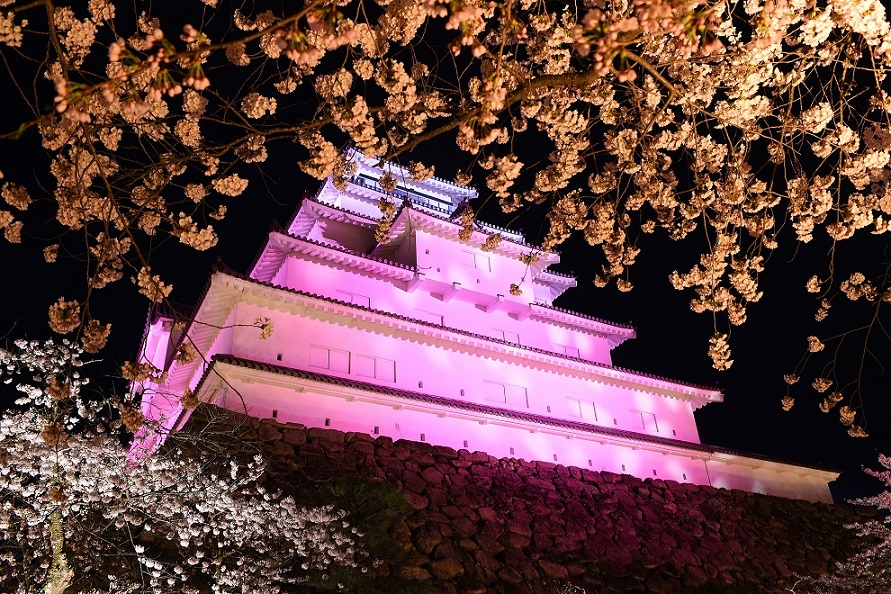
Hours: Open throughout the year (Castle tower: 8:30am – 5pm/ last entry 4:30pm)
Admission: Free
(Castle tower: 410yen/Adults, 150yen/Junior High & Elementary School Students)
Access: 15min from Aizu-Wakamatsu Station (JR Banetsu West Line) by bus.
Address: 1-1 Ote-machi, Aizuwakamatsu-shi, Fukushima
Website
The Hanami Onsen
Higashiyama Onsen Mukaitaki (Aizuwakamastu, Fukushima)
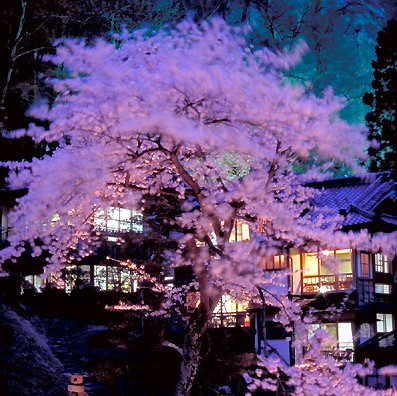
On the outskirts of the town of Aizuwakamatsu lies the hot springs of the Higashiyama Onsen village. These historically famous hot springs date back to the 8th century. During the Edo Period the village was lively with the warriors of the Aizu clan. With its elegant red tiled-roof Japanese-styled inns, traces of the area’s past are still alive even now. Built during the 6th year of the Meiji Period, the Mukaitaki Inn has a long history.
In fact, it has even been recognized by the Japanese government for national historic and cultural significance. In addition, view of sakura from its elaborately designed wooden Japanese-style guest rooms is breathtaking. The inn’s inclined courtyard with its gorgeous blooming sakura trees sits on the face of the mountain slope. The inn’s creative U-shaped design allows for the building and the garden to be enjoyed from many angles. When you walk along the corridors viewing the sakura you feel as if you have been magically carried away from the real world.
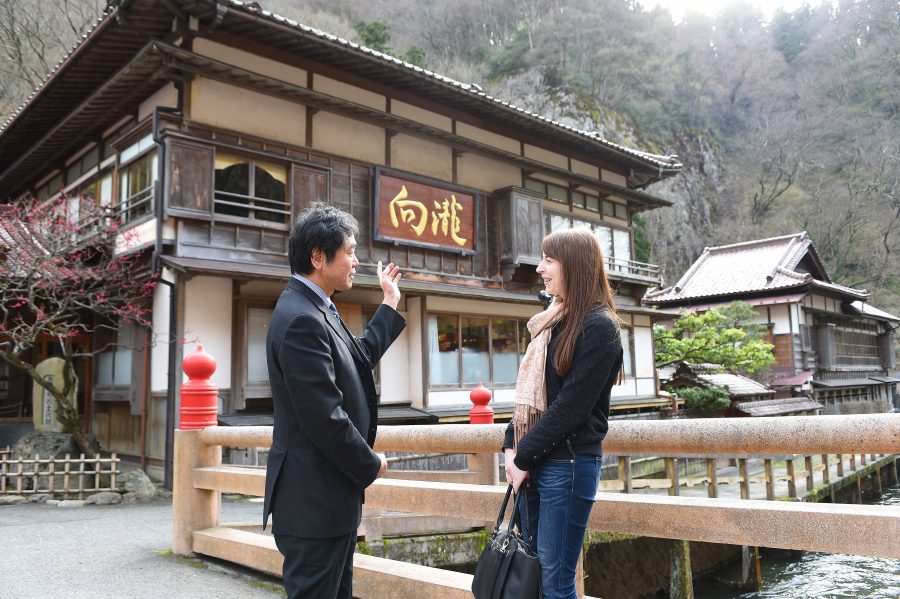
Access: 20min from Aizu-Wakamatsu Station (JR Banetsu West Line) by bus
Address: 200 Kawamukai, Higashiyama-machi, Aizuwakamatsu-shi, Fukushima
Website: http://www.mukaitaki.jp (English)
Magnificent Rock-breaking Cherry Tree
Morioka, Iwate
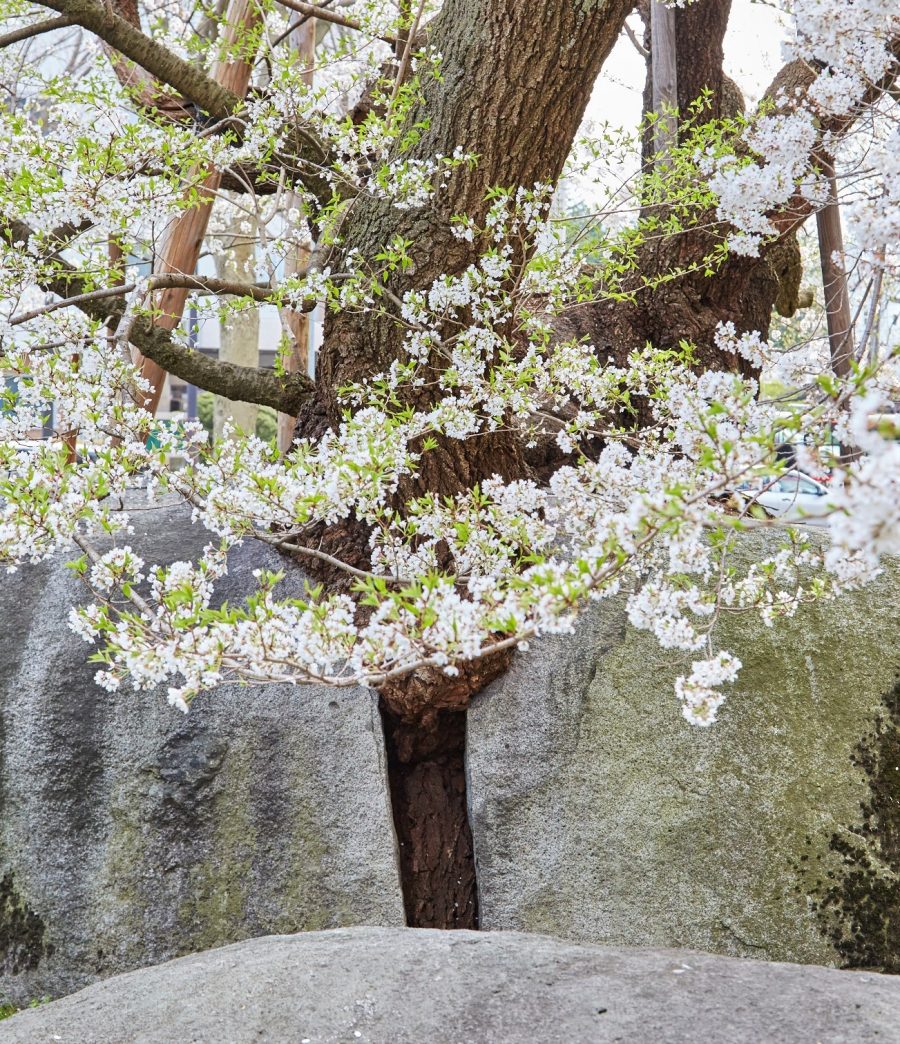
Picture an Edohiganzakura sakura tree in full bloom growing out of the cracks of a 420-ton gigantic rock. Then, you’ll have some idea of the amazing sight called “rock-breaking sakura.” The 360-year-old sakura rests at the site of Morioka District Court. Actually this site used to be the garden of the Kita family, one of the three families that ruled the Nanbu clan in the Edo period (around 1700s). Without the help of heavy machinery, it remains a mystery as to how people moved the 420-ton rock in the past.
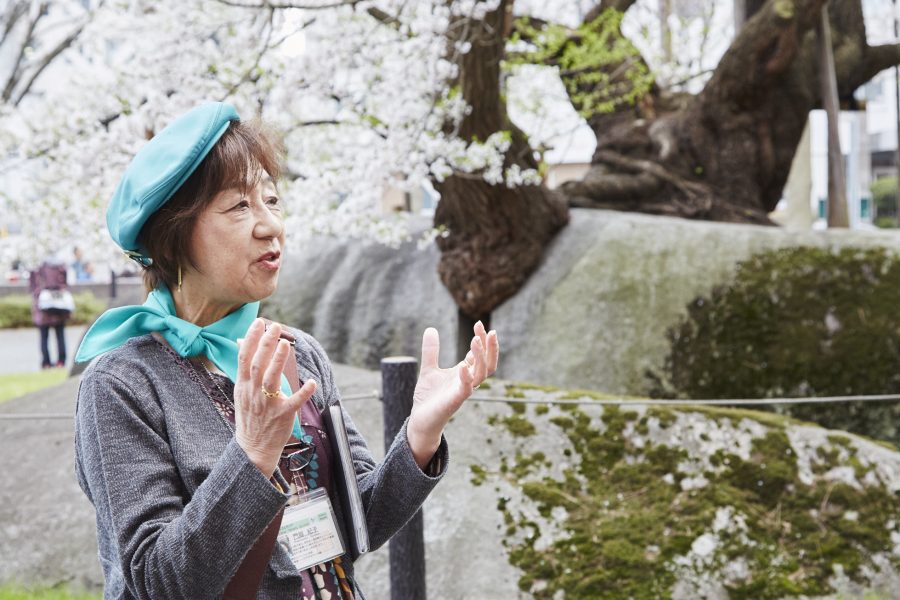
Rumors have it that a flash of lightning hit the rock one day, creating a crack. A bird flew by, dropping a sakura bud it was eating into the crack and the rest is history. Since Japanese people believe that lightning strikes are a sign of God’s presence, sakura is also a symbol of holiness and possibly because of this, never lost its life to a fire. Thanks to the care of gardeners, the sakura tree is now as healthy as ever and blossoms of white and pink bloom every spring. The “rock breaking sakura tree” is a harmony of hardness and softness. The crack where the sakura tree grows spreads 0.08 mm each year, showing its vitality and energy. Though the sakura tree may seem fragile, it certainly is strong enough to break a stone.
Access: 5min from Morioka Station (JR Tohoku Shinkansen) by bus to Chuodori Ichome stop
Address: 9-1 Uchimaru, Morioka-shi, Iwate
 0
0

